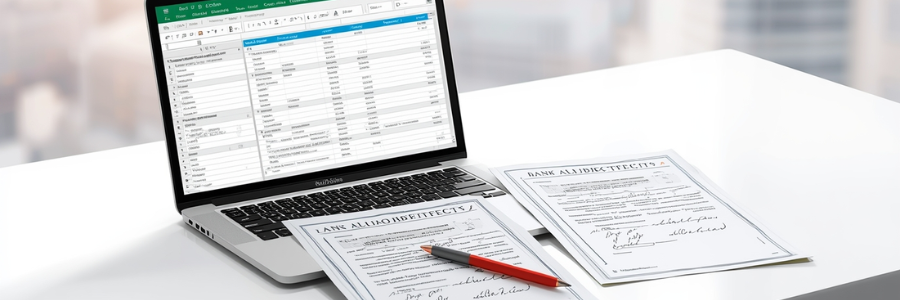How AD Code Registration Ensures Hassle-Free Foreign Remittances?
The export refers to the selling of goods or services to another country. However, the term “foreign remittances” refers to the payment an export business receives from an international buyer for goods or services it has sold. This process is determined as an inward remittance. Well, it’s an essential part of global trade activities. But the process has become more approachable and convenient with AD code registration. For the exporters, the authorized dealer code ensures hassle-free foreign remittances. This guide will explore the AD code role for a smooth foreign remittances process as well as its requirements in international trade.
1. Why the AD Code is Crucial for Foreign Remittance
The authorized dealer code is important for those who deal in international markets. Those banks that are authorized by the RBI (Reserve Bank of India) issue the AD code letter to exporters. Once it is registered on the ICEGATE portal, it allows deals in foreign exchange. Well, having the AD code benefits is not limited to customs clearance and access to incentives, but it is also crucial for foreign remittances. Conversely, before the foreign remittance process, the codes link the exporter’s current bank account to the customs system. Once the bank links to customs, the exporter gets permission to start foreign exchange legally. In short, it enables simplified fund transfer from international clients.
2. How Is AD Code Connected to Foreign Remittance?
As mentioned, the foreign remittance words are used during international transactions. The process is recognized as the inward remittance. However, it is only possible when the exporter holds a valid AD code. Under the FEMA Act, the AD code tracks and regulates the flow of foreign exchange. In detail:
- Indian Exporters: To sell the goods or services internationally, the exporters need to get the AD code, which is then registered on the ICEGATE portal. The registration on the portal is crucial for shipping bill filing. It ensures that the export shipping payment will only be credited to the right bank account. Once the payment is credited, the bank issues a Foreign Inward Remittance Certificate (FIRC). It acts as evidence for a successful foreign payment remittance.
- Indian Importers: Like exporters, the importers also use the AD code. The code ensures that the payment is sent to the foreign supplier in a designated banking channel. It avoids money fraud and illicit activities.
- Regulatory Authority Monitor: AD code registration allows the RBI to get access. This access allows RBI to manage the inflow and outflow of money.
3. What is a Foreign Inward Remittance Certificate (FIRC)?
For the exporters, the FIRC (Foreign Inward Remittance Certificate) acts as the foreign payment proof. The FIRC certificate is issued by the banks where the exporter holds its current bank account. The key functions of FIRC are
- Receipt Proof: It officially confirms that the foreign payment has been credited successfully to an Indian account from an international country.
- Compliance with Authority: It helps to align with the requirements of the Foreign Exchange Management Act (FEMA). It is also vital for keeping transaction recordings.
- Access to Benefits: With an FIRC certificate, exporters can claim export-related incentives.
- Banking Support: The certificate allows the exporters to take banking support through instant loans, subsidies, or other financial assistance.
4. The Types of FIRC (Foreign Inward Remittance Certificate)
Generally, the FIRC certificates are categorized into two types. The first one is traditional/physical FIRC. It is known as the original paper-based certificate. The physical FIRC is only an issue in specific transaction conditions, such as FII and FDI.
The second one is electronic FIRC (e-FIRC). This type of certificate is usually sent by the banks to the exporter’s registered email or published on the available bank’s online portal. The digital FIRC issue is vital for providing a digital record of the remittance.
5. Step-wise Process: How the AD Code Facilitates Smooth Transactions
An AD code governs the complete foreign payment cycle between the exporter, the exporter’s bank, and the customs authority. This 14-digit code is mandatory for all foreign payments, which allows ensuring foreign currency is brought into the country from a specified channel. The Step Up is divided into two parts:
-
Pre-Export: AD Code Setup Flow
|
Open RBI Authorized Bank |
For smooth foreign transactions, the exporter is first required to open a business current account with a bank that is authorized by the RBI. |
|
Apply for IEC Number |
During the AD code registration at customs, the exporter needs a valid Import-Export Code (IEC). The exporter can now obtain the IEC code from the Directorate General of Foreign Trade (DGFT) if needed. |
|
Send a formal request to the bank |
In order for the bank to register the AD code, the exporter will have to send a formal request letter, along with any other required documentation, to the respective bank. |
|
AD Code Letter Approval |
Once the application of the AD code letter is approved by the bank, the code will be issued on their bank’s letterhead. It marks the official certificate. |
|
AD code link on ICEGATE |
Once the AD code letter is approved, it is required to register on the ICEGATE portal. The portal links the AD code to the customs system. |
-
During Export: Customs and Compliance
|
Shipping Bill Filing by Exporter |
For customs clearance, the exporter must generate the shipping bill via the IECGATE portal. However, the exporter will only be eligible to generate the shipping bill when it holds a valid AD code. |
|
Eligibility Verification by Customs |
The customs authority verifies the AD code against the record published on the ICEGATE portal. For the goods or services, customs clearance and a valid AD code are mandatory. |
|
Proceeds start after shipment clearance. |
Once the goods clear the customs department, the payment is sent to the registered bank account. The AD code ensures that export payment is directed to the right and legally recognized channel. |
|
Bank credited the foreign currency |
When the forex buyer sends the foreign currency, it will first go to the bank. The bank converts the foreign currency into INR and then credits the INR to the exporter’s bank account. |
6. Final Discussion | Apply AD Code Registration for Customs
The exporters receive the inward remittances after selling their goods or services in another country. Inward remittances are managed by first banks, which convert foreign currency into local currency (in India, rupees). Then this amount of credit is transferred to the exporter’s linked bank account. The whole process is ensured through the AD code. The AD code registration process is a vital requirement to ensure the foreign remittances’ accuracy and transparency. Make your hassle-free international remittances journey with LegalRaasta experts. We assist you throughout the registration process.
7. Frequently Asked Questions Related to AD Code
- Why is AD code registration required?
Ans. The AD code comes with a 14-digit code, which is important to ensure the foreign exchange transaction’s legitimacy. It allows businesses to deal in foreign exchange and adhere to the RBI’s rules and regulations.
- What is the use of purpose code in foreign remittances?
Ans. In foreign remittances, the alphanumeric purpose code is used to verify the reason for a cross-border money transfer.
For example, if you are an educator, the code will classify the international money transfer as education fees.
- What do inward remittances refer to?
Ans. Inward remittances refer to the transfer of foreign currency into an exporter’s account from another country. For example, the foreign currency is transferred into an Indian exporter’s account from another country for selling goods or services.
- What is the tax rate for exporters in India?
Ans. In India, the tax rate for exporters is zero. It is determined as the ‘zero-rated supplies.’ It demonstrates that no GST will be applied to the goods or services to be exported. But it does not apply to all goods.
- Can you use the single AD code for import and export?
Ans. Yes, you can use the single AD (Authorized Dealer) code for both export and import.









